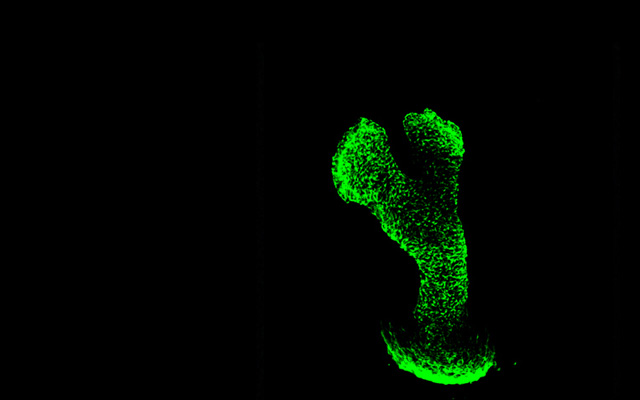Multi-Omics Molecular Characteristics of Gemcitabine Resistance in Pancreatic Cancer Cells
YU Haohui1, CHEN Lifang2, ZHOU Shiyu1, FANG Hezhi3,4, SUN Hongwei1*
GEM (gemcitabine) resistance is a major obstacle in the treatment of PDAC (pancreatic ductal adeno carcinoma). To uncover the mechanisms of drug resistance in pancreatic cancer cells, this study utilized multi-omics analy sis to establish a multidimensional dynamic molecular profile of pancreatic cancer cells during the development of drug resistance. Pancreatic cancer cell lines (PaTu-8988tG/R) with acquired GEM resistance were generated through prolonged exposure to low-dose GEM. Resistance was induced over periods of 3 months (R3M, IC₅₀=24 μmol/L), 5 months (R5M, IC₅₀=32.56 μmol/L), and 7 months (R7M, IC₅₀=37.76 μmol/L), respectively. As resistance intensified, progressive increases or decreases in the levels of metabolites such as tyrosine-glycine, oleoyl-arachidonoyl glycerol, creatine phosphate, and ceramides were detected; genes such as EVC, KCNJ4, TAF7L, FEZF1-AS1, STK33 and ANPEP; and proteins such as STK10, MRC2, RPUSD3, NEK6, ANXA3 and TLE4. These trends suggest that they are associated with the development of drug resistance. KEGG enrichment analysis revealed that, compared to the sensitive strain (R0M), R3M, R5M, and R7M all showed common enrichment in seven differential metabolic pathways, including glycerophospholipid metabolism, py rimidine metabolism, and alanine/aspartate/glutamate metabolism. In comparison to R0M, a total of 31 pathways changed significantly across all three groups, involving pathways such as pyrimidine metabolism, purine metabolism, and amino acid metabolism. Proteomics analysis showed significant changes in seven pathways during the development of resistance, including cofactor biosynthesis, pyrimidine metabolism, and ferroptosis. Multi-omics analysis revealed that pyrimidine metabolism underwent significant changes at the metabolite, gene, and protein levels in resistant cells, suggesting that this pathway played a crucial role in GEM resistance, especially in the DNA damage repair process. Specifically, NME3 was upregulated across all three groups, while CTPS1 was downregulated, with consistent changes observed at both gene and protein levels. Thus, NME3 and CTPS1 may serve as potential therapeutic targets for PDAC. In conclusion, this study pro vides a comprehensive molecular landscape of drug resistance in pancreatic cancer cells, offering reference data for future research on drug resistance mechanisms or the identification of potential intervention targets.




 CN
CN EN
EN